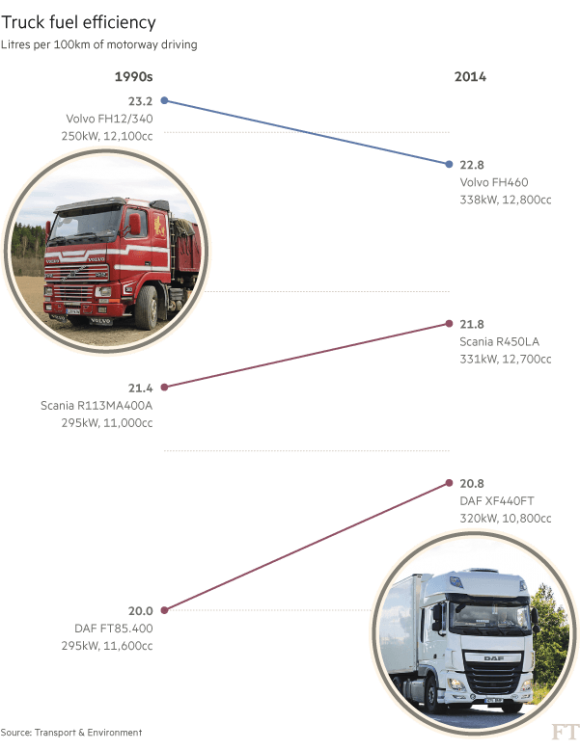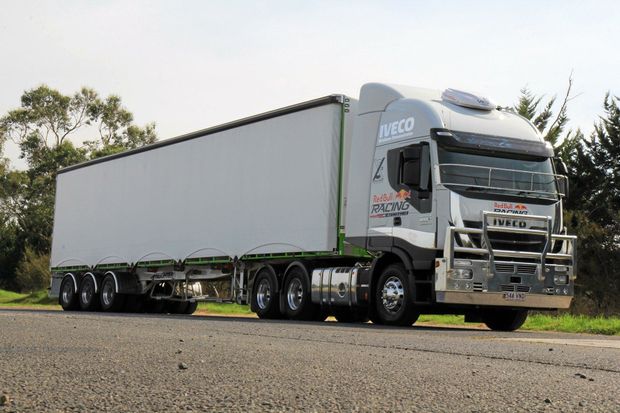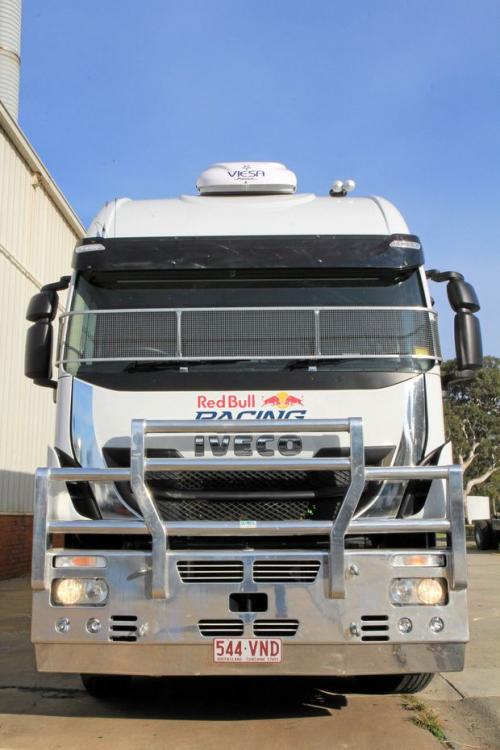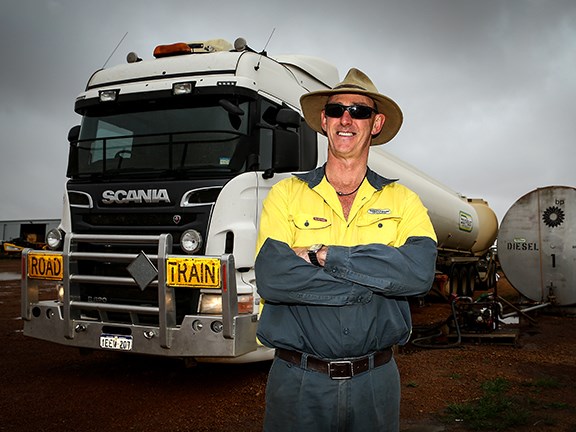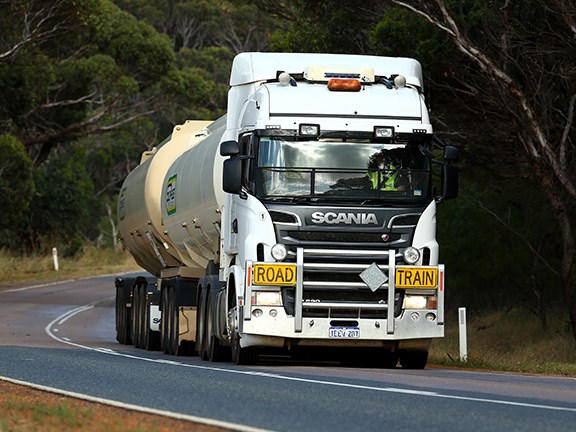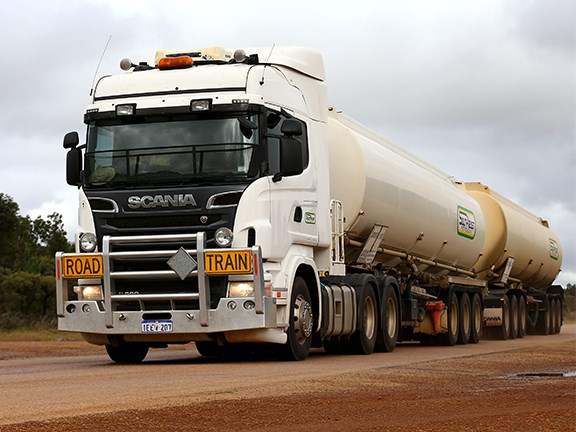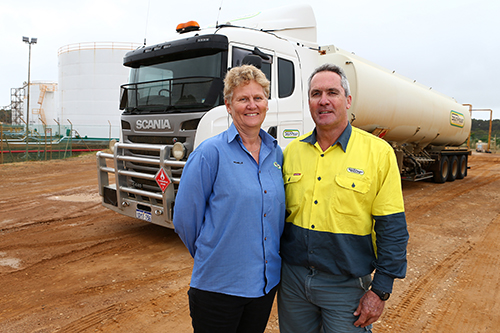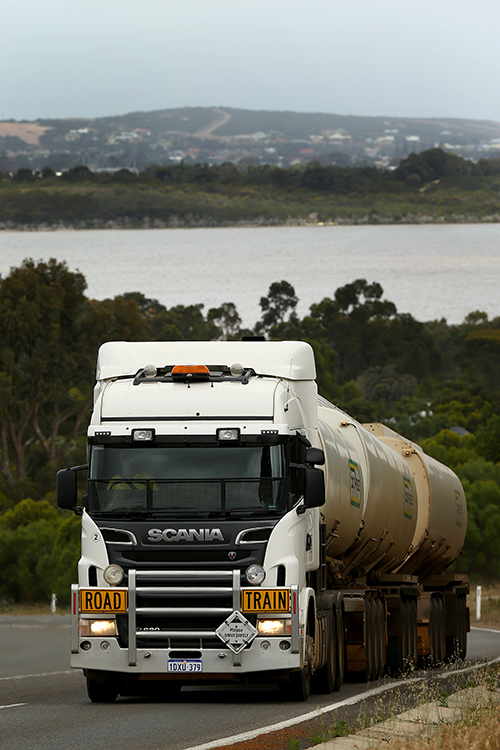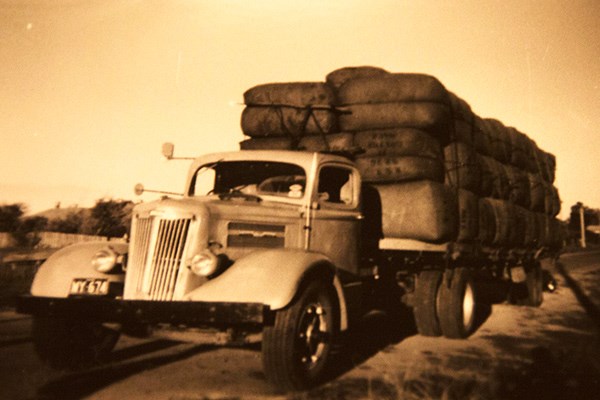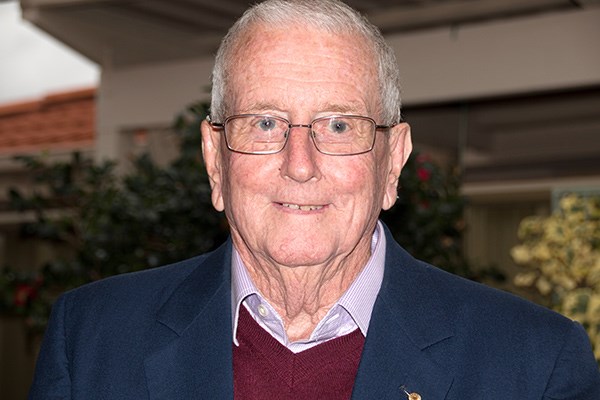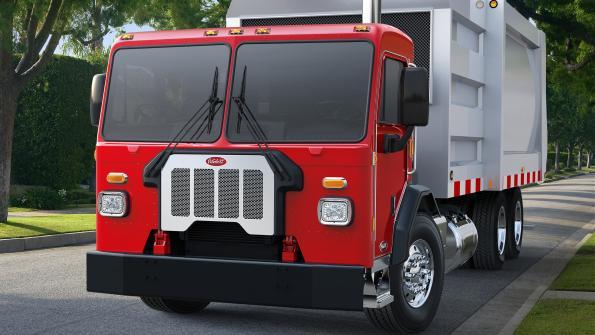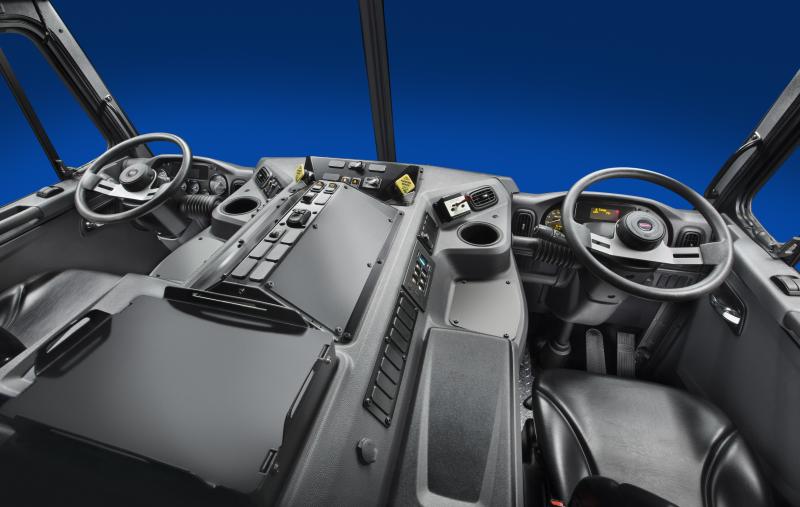
kscarbel2
Moderator-
Posts
17,891 -
Joined
-
Days Won
86
Content Type
Profiles
Forums
Gallery
Events
Blogs
BMT Wiki
Collections
Store
Everything posted by kscarbel2
-
US House: cars are cleaner, so we should use less ethanol
kscarbel2 replied to kscarbel2's topic in Odds and Ends
USDA awarding $8.8M to 108 companies to support the production of advanced biofuel Green Car Congress / May 28, 2016 The US Department of Agriculture (USDA) is awarding $8.8 million to 108 companies in 39 states to boost the production of advanced biofuels. The funding is being provided through USDA’s Advanced Biofuel Payment Program, which was established in the 2008 Farm Bill. Payments are made to biofuels producers based on the amount of advanced biofuels produced from renewable biomass, other than corn kernel starch. Examples of eligible feedstocks include crop residue, food and yard waste, vegetable oil, and animal fat. Through this program to date, USDA has made $308 million in payments to 382 producers in 47 states and territories. These payments have produced enough biofuel to provide more than 391 billion kilowatt hours of electric energy. -
Financial Times / May 29, 2016 Six groups set aside €2.6bn (US$2.9 billion) over charges they fixed prices and delayed emission technologies The EU is set to issue the biggest cartel fine in its history, punishing Europe’s largest truckmakers over charges that they fixed prices and delayed the introduction of new emission technologies. Margrethe Vestager, EU competition commissioner, issued the original charge sheet against DAF, Daimler, Iveco, Scania, MAN and Volvo/Renault in 2014. Four of those companies have now set aside provisions amounting to $2.6bn (US$2.9bn). People close to the discussions on penalties say that they are expecting the fine this year, possibly within weeks, unless there is a reversal by the European Commission. The expected fine easily outstrips the EU’s previous record of €1.4bn (US$1.6 bn) for a television and computer monitor tubes cartel in 2012, and dwarfs those imposed over euro and yen interest rate derivative cartels. Ms Vestager has compared the action against the truckmakers to her landmark antitrust showdowns with Google, the US search group, and Gazprom, Russia’s gas export monopoly. Her probe focuses on the behaviour of the six companies between 1997 and 2011, according to documents seen by the Financial Times. The charges describe several ways in which the manufacturers allegedly colluded on price. Most sensitively after the Volkswagen scandal, the companies are also accused of agreeing the “timing and price increase levels for the introduction of new emission technologies”. Ms Vestager has stressed that Europe has 600,000 hauliers — mostly small businesses — and argues that any price collusion among truckmakers would have put up prices of everything from food to furniture. The companies said they were co-operating with the investigation, although one added it might appeal any negative decision. In preparation for a big financial hit, DAF has put aside US$945m; Iveco $500m, Daimler €600m (US$672m) and Volvo SKr3.7bn (US$444m). As the whistleblower, MAN, which is owned by Volkswagen Group, would ordinarily escape a fine. Only Scania, which is also owned by VW, has not put aside any money. “Scania remains unable to estimate the impact the investigation will have,” the company said its annual report. “It cannot be ruled out that the commission will impose fines on Scania,” it added. Between them, the six have near total control of the market. The commission’s inspectors raided their offices in January 2011. Lawyers cautioned that the provisions made by the companies did not mean that the commission would not push for a higher sum. Under EU rules, the companies may face a fine of up to 10 per cent of their global turnover. In the case of the brands involved, that could amount to a maximum of €10.7bn (US$11.9bn). One person briefed on the case said the fines being considered were “extremely high” and that two truckmakers had discussed leniency with the commission because the full potential fine could cause serious financial problems. A fine is often only the initial financial penalty for companies found to be part of a cartel; some hauliers are considering whether to pursue follow-up damages. “We will be waiting with very keen interest to see what the commission says,” said Jack Semple, director of policy at the Road Haulage Association. “If we see record damages then there will be consequences for that.” The commission declined to comment on the case, beyond saying that it was a “priority”. .
-
The Germans (M-B and MAN) were the first to catch up with American truck technology. The Swedes later caught up to the Germans. Now, Italy's Iveco has reached Europe's big league. As BC Mack will tell you, Iveco is very popular now in the UK. They offer a very good value. The "Hi-Way" Stralis is an updated verson of the Stralis design. .
-
This is a complex question. In Oz, a Euro-5 13-liter/AMT/air ride Stralis 6x4 tractor runs around US$175,000 to US$200,000. But if the Euro-6 (near EPA2010) 6x4 Stralis was assembled in the US from a KD (knocked-down) kit, would run US$120,000 to $150,000, depending on drivetrain, ect. But Oz is expensive. Your US$1000 Sony TV cost US$2000 in Oz. There a lot to global sales pricing. First you have the "ex-works" price, the price when it rolls out of the home-country factory. But that price varies, for one reason, because the cost of homologation varies country to country (e.g. differing lighting and safety requirements). Then you have your "landed cost", the price of the truck as it arrives in country at the importing distributor, after you've added in ALL the costs to get it there, including import tariffs, various transportation (logistics) customs fees and red tape. These costs varies tremendously country-to-country. In the US, we still have the ridiculous 25 percent import tax on trucks, Lyndon Johnson's Proclamation 3564, aka. the Chicken Tax. This is why the Japanese trucks are assembled here from KD (knocked-down) kits, so as to avoid that tax.
-
Botched drug sting: Trucker looks to Supreme Court
kscarbel2 replied to kscarbel2's topic in Trucking News
The Weekly Standard / May 23, 2016 Local authorities in Pueblo, just 40 miles south of Colorado Springs, were recently alerted by a vigilant resident to a possible illegal marijuana grow operation. Within days, on March 31, sheriff's deputies from the Special Investigations Narcotics Section raided a single-family home that was in the process of being converted into a "grow house." Authorities discovered 127 marijuana plants, over $100,000 in growing equipment, and two Cuban nationals. At first, no one seemed to take particular note of the individuals, Adriel Trujillo Daniel, 28, and Leosbel Ledesma Quintana, 41, who had recently moved to Colorado from Florida. They were arrested on felony drug charges but local authorities initially believed it was an isolated event. But in the span of the next week and a half, local authorities would arrest at least four more individuals in the Pueblo area in similar cases, with similar backgrounds. All were recent transplants to the state. All were reported by neighbors or by other Pueblo residents who had witnessed suspicious activity. All were transforming residential homes into elaborate marijuana grow operations. And all were Cuban nationals. "We have quite a bit of evidence" to believe they are members of "Cuban cartels," Pueblo sheriff Kirk Taylor says in an interview. Local, state, and federal officials believe it's not just isolated to Pueblo. "It's across the entire state of Colorado," DEA assistant special agent in charge Kevin Merrill says. "It's just basically taken over the state, these residential grows." Merrill likens the danger to that of meth labs in homes. Besides the criminal element, turning a house into a greenhouse invariably destroys the home. "The destruction of the homes and neighborhoods is even greater." It is what Colorado Springs mayor John Suthers calls "the total nightmare" scenario, a byproduct of the state's recent legalization of first medicinal, and later recreational, marijuana. People from out of town or even foreign countries move to Colorado and "buy or lease houses by the hundreds if not thousands," explains Suthers, who previously served 10 years as attorney general of the state. The new residents then convert the residential homes to industrial grow operations. They're "basically trashing the houses because they're making so much money they don't care, and growing hundreds and hundreds and hundreds of plants in each house. And transporting it out of state to marijuana markets nationally and internationally. Literally. Marijuana is going back to Mexico from Colorado," asserts Suthers. This criminal activity undermines a key argument used for legalizing marijuana in the first place. "One of the big arguments was, we're going to get the cartels out of the marijuana business. Because we're going to have all these legitimate businesses selling it. The Mexican cartels are going to dry up and go away," he says. But now things are different. "Mexican cartels are no longer sending marijuana into Colorado, they're now growing it in Colorado and sending it back to Mexico and every place else." With legalization of medicinal and recreational marijuana came the ability for locals to grow up to six plants at home-and sometimes up to 99, if they are a designated caregiver under the state law that legalized medicinal marijuana. "That has created an enforcement nightmare for the police," the state's former top cop says. "But it's going beyond that. Because of that aura of no enforcement, organized crime has come to Colorado to grow the marijuana." "The surprising element is Cuban-Cuban cartels," Suthers says. The DEA official insists the international element is increasing. "It's not just Cubans. We have Vietnamese-based organizations, Russian organized people. But we have seen a large influx of Cubans coming here. And we believe that all the organizations are here because we have a perceived lack of enforcement." Thanks to the ubiquity of marijuana in the state of Colorado, when they come, "they don't really have to hide," says the DEA official. "Their [main] risk of arrest or prosecution is when they move the marijuana outside the state." Another reason the problem is particular to Colorado-and not in the other 22 states and the District of Columbia that have some form of legal marijuana-is that Colorado has uniquely loose medical marijuana laws, which are meant to allow the ailing to grow substantial crops at home. "In Colorado, if you go to a physician and you get a recommendation, you can grow 99 plants, so if you live with four others, you can grow almost 500," says Merrill, the DEA official. He has never seen any sort of mid- to large-scale home operation actually being used for medical marijuana. It is one of "the unintended consequences of the medical marijuana" law, Merrill contends. The state's marijuana czar appears to agree with Merrill's contention-and has called for further regulation. "There has been evidence that people will abandon the black market for a regulated market, even at higher prices. However, as long as there is both an economic incentive to grow in Colorado and ship out of state, as well as legal loopholes to allow unlicensed individuals to grow large quantities of marijuana, it will be difficult for law enforcement to shut down the black and gray markets," says Andrew Freedman, the coordinator of marijuana policy for Colorado. "Interestingly, these loopholes are found in our medical marijuana laws, not in our recreational marijuana laws." Which suggests John Suthers may find widespread support when he soon proposes to the legislature to , eliminate the influx of foreign crime [that would be an unlikely first] by outlawing home grows. That's a law even the legal growers and sellers of marijuana will likely support. -
The Financial Times / May 28, 2016 Admirals among those investigated over allegations of bribes, prostitutes and military secrets US investigators are probing three dozen senior navy officers to determine if they were connected with a scandal that involved top US brass exchanging military secrets for cash, lavish meals and prostitutes. Investigators from the Department of Justice and the Navy Criminal Investigative Service are probing the officers — who are either admirals or captains in line for promotion to admiral — as part of a multiyear investigation into a Malaysian contractor known as “Fat Leonard” who used his connections with the US Navy to bilk the service out of millions of dollars. The Washington Post on Friday published an investigation into the scandal, which revealed how the contractor, a wealthy Malaysian whose real name is Leonard Glenn Francis and who was caught in a sting in California in 2013, had cultivated senior officers in the seventh fleet which operates in the Pacific. Fat Leonard, weighing 350lbs at the time of his arrest, pleaded guilty to fraud in California last year. He admitted to routinely overcharging the US Navy for services such as refuelling at ports across Asia where his company, Glenn Defense Marine Asia, had contracts with the US and other western navies. One US military official confirmed that criminal investigators were looking into the cases of officers who had served in the Pacific during the years that the bribery had occurred to work out if they were involved in what is seen as the worst national security scandal to hit the US Navy in decades. The navy suffered a damaging scandal called “Tailhook” in 1991, which involved widespread sexual harassment. But the Fat Leonard case is seen as more serious since it involves the passing of military secrets to a man operating in a region where the US faces a rising challenge from China. The probe has drawn in approximately 10 per cent of the roughly 280 admirals in the US Navy. The military official said that while investigators were looking at a large number of top brass, some were only being scrutinised because they had served in the region during the period when the bribery occurred. According to the Washington Post, Fat Leonard liked to use photos of himself with senior navy officers to impress junior officers or suggest that he had influence that meant they should not question his activities. According to the Washington Post story, Fat Leonard used the allure of sex with prostitutes as a potent bribe. On one occasion, he videotaped a navy officer having sex with twin Vietnamese prostitutes in a hotel in Singapore. On other occasions, he procured prostitutes from escort services to entertain officers at parties after official events. The justice department declined to comment on the details, but said “the investigation into those involved in this long-running corruption scheme continues apace, uncovering substantial wrongdoing”. On Friday, a court in California unsealed an indictment of Michael George Brooks, a former US naval attaché in Manila, on charges of conspiracy to commit bribery and criminal forfeiture in relation to the case. Mr Brooks was accused of providing Fat Leonard’s company with internal navy documents, obtaining diplomatic clearance for Glenn Defense Marine vessels to enter Philippine harbours and even allowing the contractor to ghost write its own annual evaluation. According to the indictment, Mr Brooks was accused of receiving gifts of expensive hotel rooms, meals, and prostitutes, which he referred to in coded emails as “shakes” or “chocolate shakes” over a two-year period from the middle of 2006. Mr Brooks referred to Fat Leonard in their email exchanges as “boss”, while the contractor warned his employees to be circumspect in their dealings with the naval officer, saying: “we are surrounded by vipers.” The Washington Post reported that Admiral John Richardson, head of US naval operations, recently told 200 admirals in Washington that roughly 30 of them were under investigation. The military official told the Financial Times that Adm Richardson held another routine meeting last week during which the scandal was again discussed. Before that meeting, Adm Richardson sent a memo to senior navy officials, in which he reminded them of the need to uphold the values of the navy, which traditionally has been one of the toughest services in terms of discipline. “We share a professional and moral obligation to continuously examine our motivations and personal conduct, and, where required, adjust our behaviours back in line with our values,” the admiral wrote in the memo. More than 10 officers and contractors connected with the case have pleaded guilty over the scandal, which has sent shockwaves through the navy. It has affected the running of the navy as officers under any suspicion cannot be promoted, which complicates personnel management. The same California court unsealed a second indictment later on Friday of Bobby Pitts, a former US Navy commander who ran a logistics command in Singapore. It accused him of providing Fat Leonard with a copy of an NCIS report on its investigation along with an internal email showing that officials planned to ask the Thai government if the contractor had billed the navy for force protection services that the Thais had provided for free. In return, Mr Pitts received paid entertainment, including the services of prostitutes, the indictment alleges. A third criminal complaint unveiled on Friday accused Lieutenant Commander Gentry Debord, a logistics officer, of giving Fat Leonard internal navy documents, including pricing details on his competitors, and paid invoices he knew were inflated. According to the complaint, Cmdr Debord and his family were treated to stays at luxury resorts in Thailand, Indonesia and the Philippines while he enjoyed trysts with prostitutes. In coded emails with an employee of Fat Leonard, he requested prostitutes, which he called “cheesecakes” and “bodyguards”. One Glenn Marine email referred to the officer as “sex-crazy Debord.” He is accused of conspiracy to commit bribery over a five-year period ending in early 2013.
-
The compatibility issue.............with "western" values ------------------------------------------------------------------------------------ Pakistani men can beat wives 'lightly,' Islamic council says CNN / May 28, 2016 The leader of a Pakistani Islamic council has proposed a bill that allows husbands to "lightly beat" their wives as a form of discipline. In the 75-page proposal, Mohammad Khan Sheerani suggests a light beating is acceptable should the need arise to punish a woman. The proposal bans forceful beating, saying only a small stick is necessary to instill fear. The Council of Islamic Ideology is a powerful constitutional body that advises the Pakistani legislature whether laws are in line with the teachings of Islam. Its proposed bill is seen as a response to the rejected Punjab Women Protection bill for abused women. The council shunned it as "un-Islamic" and wrote its own bill, which includes the recommendation for the light beating. "A husband should be allowed to lightly beat his wife if she defies his commands and refuses to dress up as per his desires; turns down demand of intercourse without any religious excuse or does not take bath after intercourse or menstrual periods," the proposal says. The proposal also calls for a beating if a woman does not wear a hijab, if she interacts with strangers, speaks too loudly or gives others cash without her husband's permission. It also suggests bans on various activities, including women fighting in wars. But it allows women to participate in politics and become judges, and proposes that the need for a guardian for women of age is not required. The proposal also says that women should not be permitted to receive non-relatives or foreign officials, and they should not use birth control pills without asking their husbands.
-
Iveco’s ‘big car’ Big Rigs / May 27, 2016 IVECO is aiming its latest Stralis prime mover at the regional and interstate sector. It’s a highly competitive market, with the currrent slowdown squeezing margins even tighter. But Stralis has a cab offering that would swing a lot of deals Iveco’s way if it can just get drivers behind the wheel. Getting on board a Stralis is made easy with three large steps in front of the wheel. Once in the seat, there is an overall impression of a big car, with similar padded trim and minimal dials and gauges. On the dash there’s just a speedo and a tacho, plus smaller fuel and engine temp gauges. A rectangular screen delivers any other information, including exceptions when the truck’s data suite detects a problem. Driving controls couldn’t be easier. A lever action park brake, then three buttons for the ZF transmission – D, N and R. The air seat has a bewildering array of adjustment while the steering wheel has buttons for menu, phone, sound system volume and menu navigation. On the right of the steering column is a lever for cruise control, and a two-stage auxiliary brake. Most functions can be operated while keeping both hands on the wheel. To the left are light switches for back of cab, driving and fog lights and the main beam rotary switch is underneath those. Interior lights are alongside the gear selection buttons. The main console is heavily skewed towards the driver, and includes hazard lights, windscreen shade/blind, air suspension height adjustment and the roof hatch control. Beneath are large air vents, which deliver plenty of cold air on max air-con, plus drink and bits-n-pieces trays, with ashtray and 12V power supply below that. But there’s no USB port, either for the sound system or for charging devices. A climate control system looks after temperature and the whole section is topped off with a large tray with a non-slip surface, which is perfect for phones and even iPads. The AS-L cab is stand-up height and there are two bunks. The bottom bunk has a control panel on the right-hand side of the cab that allows you to work the main dome light, power windows, roof hatch, door locks, radio, CD player and windscreen blind without getting out from under the doona. It also has a clock and alarm function. A bright map light is also on a stalk and is plenty for reading. There’s a fold-down shelf for a laptop or small TV, plus a handy 12V power outlet. The curtains for the side windows and those separating the bunk area from the driving seats are thick and heavy, so glare and noise from the parking area won’t be a problem. Under the bunks are a larger-than-esky size storage compartment, plus a separate slide out fridge box big enough for several meals, plus a couple of drinks. Overhead storage is cavernous, and each section has its own hinged lid for security. Clearly the Stralis cab has been designed by people who know what it’s like to be on the road day and night. .
-
Big Rigs / May 27, 2016 My first ever drive in an Iveco Stralis was wa-a-a-y back in 2007, at least a couple of models ago. I was running a B-double from Eastern Creek up to Kempsey as part of a B-double fuel economy comparison. At that stage the UD GW470 was the leader in the fuel stakes, beating the Hino 700 and Mack Trident, even though it had the least horsepower and wasn’t really aimed at the interstate B-double market. It also had the gong for the best cab set-up. But that was before the Stralis had its turn. The biggest Italian impressed from the start, but worried me as I hit the freeway around the Hawkesbury. I found myself adjusting the steering constantly, until the factory driver along for the ride pointed out hat the truck was tracking straight and true –- it was just the gusting wind that was catching the tall Iveco cab and making me think the truck was wandering. As soon as I figured that out, all was well and I very quickly settled into what was the most comfortable prime mover I’d driven. The latest model is no less comfortable, but some aerodynamic changes appear to have eased the buffeting I felt back then. Looking closely at the exterior, the Stralis cab doesn’t appear to be as aerodynamic as some of its Euro competition. It must be effective though, because on the road there is almost no wind noise, and with a super-quiet engine the only thing to disturb the peace is tyre whine. The test truck even had an external sun visor and insect screen, neither of which whistled and rattled as they often do. It took me a while to get used to the latest 16-speed ZF transmission. There’s a strong indent at about three-quarter throttle, and if I kept it there the truck kept the changes in the green zone between 1000 and 1500rpm, skipping shifts where possible. But if I pushed through the indent it skipped even more gears while running the revs through a wide range between 1000 and 2100rpm. This new Cursor engine is probably at its limits of 13-litre power and torque at its maximum rating of 560hp and 2300Nm, but the test truck was the 500hp version and had no trouble delivering consistent acceleration right through the working rev range. The auxiliary brake is a two-stage unit operated from the steering column and complements the all-round disc brakes and Wabco E 4-channel ABS with EBL and ASR. It automatically drops gears when it reads heavier braking is required. Stralis has excellent vision, helped by an electric full width sunvisor and individual side window blinds to manage the early morning or late afternoon glare. The new Stralis is well suited to regional or interstate work where driver fatigue is a critical issue. Using the left armrest on the driver’s seat and resting my right arm on the wide door-sill, I could have driven for many more hours than this relatively short test allowed. My remaining suggestion would be to make sure you have a drive of one before signing on for your next truck. The comfort and quiet will impress anyone behind the wheel, and if you do your own service, the two-year, 500,000km/6000 hours warranty, with 100 percent parts and labour covered will ease past concerns of some operators. .
-
'Very unique' 1969 Mack Flintstone hits Harden
kscarbel2 replied to kscarbel2's topic in Trucking News
The 2016 Harden Truck and Tractor Show Trade Trucks.com.au / May 18, 2016 Although the Harden Truck and Tractor Show is one of the newest events on the trucking calendar, its laid-back country style attracts visitors from far and wide Now in its third official year, it was inevitable that the twin New South Wales towns of Harden-Murrumburrah would host an annual truck show. After all, Harden is the birthplace of Ken Thomas, founder of TNT. Indeed, it was the Harden Historical Society’s commemoration of Thomas’ 100th birthday in 2013, including the launch of David Wilcox’ biography on Thomas — The Truckie Who Loved Trains — that was the catalyst for the first official Harden Truck and Tractor Show in 2014. In conjunction with the celebrations, the Harden Historical Society invited the newly-formed Harden Historic Truck and Tractor Club to organise a truck show. "We did that, and that was such a success we decided we’d have a truck show annually," club president Kevin Sharp says. The Harden Historic Truck and Tractor Club was formed in 2011 with 10 members. "We’re up to about 26 members now, so we’ve grown steadily," Kevin says. The 2016 event, held on March 20 at the Harden-Murrumburrah showgrounds, attracted an impressively diverse array of trucks, tractors, coaches and stationary engines. The trucks, many bearing historic club plates, came not only from the Harden-Murrumburrah area, but also from Coonabarabran, Dubbo, Orange, Bathurst, Queanbeyan, Bega, Sydney and the NSW Central Coast. That was despite competition from truck events in Oaklands, Penrith and Kyabram in Victoria the same weekend, not to mention other community events held nearby. "We’ve got the Stockinbingal Fair near Cootamundra, they’re reopening Temora railway station with steam trains there, there’s a fair on over at Boorowa, and we had the Chinese festival in Young yesterday," Kevin says. "But we’re happy with the roll-up we’ve got here." Photo gallery - http://www.tradetrucks.com.au/events/1605/the-2016-harden-truck-and-tractor-show/ -
Owner/Driver / May 27, 2016 In a remote West Australian rural outpost, South East Petroleum and its fleet of Scania trucks is keeping the fuel flowing to the region’s farmers, writes MATT WOOD Keepiing the wheels of agriculture and industry turning can be a challenge in regional Australia. The tyranny of distance and a changeable climate makes for a big job description. Esperance-based South East Petroleum on the south coast of Western Australia is tasked with keeping the fuel flowing to the southern wheat belt’s farmers and industry. It’s an isolated and sparsely populated area that clings to the granite, sand, scrub and clay of the Esperance Plains sandwiched between the Southern Ocean and the goldfields to the North. Global gateway The Port of Esperance is the area’s gateway to the world. Fifty percent of Australia’s wheat crop is grown in WA and more than 95 percent of that harvest is exported to foreign markets, with some of it passing through this port. Yet this southern-most tip of the West Australian wheat belt is still something of a remote outpost. South East Petroleum is the local BP distributor. The business has been owned and operated by Grant and Michelle Harris since 1990 and handles fuel deliveries to farms, businesses, worksites and servos around the Esperance region. SEP also supplies service stations along the Nullarbor plain as far as Cocklebiddy. And, somewhat surprisingly for this region, the entire six-truck fleet consists of Scania prime movers. Grant Harris comes from a family farming background and the company workload tends to roll with the fluctuations of the agricultural seasons against the backdrop of consistent retail and industrial work. Seeding and harvest times see the SEP trucks busy keeping up with farm deliveries as well as maintaining the flow of fuel to retail outlets and some BP corporate customers. As you’d expect of a country fuel distributor, South East Petroleum delivers ULP and PULP, but the rural and industry focus of the business sees diesel as the most in-demand product, Grant says, adding, "Diesel would be a good 90 percent of our business". Changing times Grant says that changing farming methods over the last couple of decades have had an interesting effect on fuel demand during peak times. "During seeding farmers are using bigger machines, but proportionally less fuel per hectare," he says. "But come harvest, when the weather comes right it’s frantic. They’ve got three headers, a chaser bin and two trucks … they use a lot more fuel over harvest than they used to. "They just want to get it off while the weather’s good," he adds According to Grant, there are many innovative farming businesses in the area. "There are a lot of early innovators down here," he says. "They’ve set up the South Eastern Premium Wheat Growers Association (SEPGA), to run their own trials, raise their own funds and get their own corporate sponsorship. "As an area, there’s a group of really highly progressive and innovative farmers." Road train rumble One South East Petroleum employee is Trevor Bale, who drives one of the company trucks. Trevor works part time for the company as a relief driver as well as running his own business. I took the opportunity to go for a run with him in a Scania R620 truck hooked up to a set of double road train tankers. Given the variety of customers, the fleet uses a mix of B-double, road train, C-train and single-trailer combinations. Trevor has worked for SEP for over five years and fuel haulage is nothing new to him — years ago he cut his teeth with a 12-year stint hauling triples up north with Shell. As a double road train we were carrying 72,000 litres of diesel and Trevor’s day was going to consist mainly of farm deliveries. Nicely insulated inside the R-series cab, we idled out of town with the big V8 quietly rumbling under our feet. In typically Scania fashion the 16 litre didn’t raise much of a sweat as we climbed away from the coast; the Opticruise Automated gearbox quietly grabbed the required cogs. Two other R620s haul road train and C-train combinations. One is driven by 30-year company veteran, Glenn (Bindi) Sievewright, who looks after the two-day Nullabour run once a week, and the other is driven by Mick Creedon. Scania agreement All of the SEP trucks are on a Scania Repair and Maintenance (R&M) agreement and the trucks are serviced at the local Scania agent every 15,000km. The trailers are serviced every 7,000km. Because the fleet transports dangerous goods, the trucks and trailers are required to have an independent safety inspection every six months. As a mechanic by trade and wearing his maintenance hat, Trevor says, "The fixed cost factor (of the R&M agreement) makes sense for us. It helps us understand our cost base." And to date he’s pretty keen to sing the praises of Scania and the local workshop, saying they’ve been well looked after. The changeable weather that blows in off the Southern Ocean had brought a brisk wind and showers inland, slowing the frantic pace of harvest. As we drove, behind us the rear trailer and dolly rolled through a cloud road spray as Trevor and I chatted, his hands relaxed on the wheel. Single shift The South East Petroleum fleet works on a single-shift, one-truck, one-driver basis. As so much of the work is farm based there’s no real call for around-the-clock deliveries. No doubt not too many customers want to be woken in the middle night by a road train idling past the house. Our destination on this trip was the main property of Chillwell, which is run by the Fowler family. The Fowlers run 28,000ha, 18,500ha of which is used for cropping. Like many family farms in the area, Chillwell is only a second-generation business. Much of the area was virgin scrub until the first generation moved into the area. It was said that the area couldn’t be cropped. But, in keeping with Grant Harris’s earlier observations on innovative farmers in the area, the Fowlers have a no-till approach to cropping. The Fowlers have also come to the attention of others in the industry for the practice of using sprouting crop as pasture. Big machines You can imagine that a property of this size, with multiple headers working flat-chat at harvest, has a mighty thirst for diesel. Hence the 100,000 litres of storage on the farm, as well as a farm-based fuel tanker. The machines have gotten bigger too: headers with 50-foot combs are common place in this area and 80-foot seeders are just as common. Farmers run their own road train combinations and feed their seeders with tippers. They’re big machines for big country. According to Trevor, this increase in mechanisation has seen harvest go from three months to just six weeks in many cases. And this harvest was looking to be a record year with many reporting yields of 4 tonnes to the hectare. Manoeuvrability Trevor’s Scania R620 grumbled along the rough blacktop smoothly. All of the trailers in the fleet are fitted with lift axles — as the compartments are emptied axles lift off the ground, improving manoeuvrability and fuel economy on the empty run home. The big Scania slowed to a crawl, with the retarder reducing the need for braking as we described a slow arc into the property. The rain had stilled the headers for a bit, but the property was still a hive of activity as maintenance was done, making the most of the spell before jumping back into harvest fever. The sand and clay soil crunched quietly under the wheels of the tanker as Trevor expertly threaded the road train through the property gates and pulled to a stop alongside the fuel storage tanks. The heady post-rain smell of the damp earth hung in the air as if the pores of the landscape had opened to breathe. I shook hands with Trevor and said my goodbyes. The big Swedish V8 looks to be serving South East Petroleum well. In a role that would normally be associated with big American iron the Scania has been making friends of drivers and operators alike. And the wheels of the rural economy will keep on turning. Footnote A couple of weeks after our visit to Esperance disaster struck. Lightning strikes and high winds sparked a blaze between Scadden and Salmon Gums about 100km north of Esperance. One local died while trying to warn his neighbours to evacuate and three farm workers died fleeing the blaze. Farms and crops were completely burnt out. Over 300,000 hectares were completely burnt out, obliterating a harvest that for some was set to be the best ever. .
-
Owner/Driver / May 27, 2016 Retired Albury transport operator, Arch McLeish, reflects on his four decades in the industry Sixty-five years have passed since Arch McLeish first travelled the Hume Highway in his White WB20, but the retired Albury transport operator says the White is still his favourite truck. Arch, 89, worked at Beaurepaires in Albury, New South Wales, after he left the Navy. He purchased the White from a customer late in 1950. "I’d serviced it," Arch says. "I knew it was a good truck. "I was good to it, and it was good to me." His business, AJ McLeish, was boosted by a rail strike in the early 1950s. Arch carted wool from Albury to Melbourne, returning with beer from Carlton & United Breweries (CUB). Transport regulations tightened up again when the rail strike ended, but Arch still had plenty of work for his White. The Hughes & Vale decision of 1954 led to another trucking boom. Arch expanded his interstate freight service between Albury and Melbourne. "We had two trucks by the time the 1960s came and we went up to about 10 in the 1960s." Supermarket goods, produce, grain, steel and building material all helped him build his fleet. Arch believes AJ McLeish was the biggest truck company in Albury by the end of the 1970s. His fleet peaked with 17 prime movers in the 1980s when he was carting rolls of newsprint from Albury to Melbourne. "We were loading five a day." In 1989 Arch retired and sold his trucks. He enjoyed one last run on the Hume, driving his SAR Kenworth. "I took a load of pet food to Melbourne and brought a load of cans back. It was a bit different to the first load I’d done." Arch was a popular guest speaker at the Crawlin’ the Hume dinner at Albury in April. He entertained the audience with memories of the old Hume Highway. .
-
- 2
-

-
Aussie Volvo teams set to contest VISTA World Finals Prime Mover Magazine / May 26, 2016 The world’s best aftermarket professionals in Volvo’s service network, including two teams from its Australian dealer network, are set to meet at the World Finals of the Volvo International Service Training Award (VISTA) 2015-2016 in Gothenburg, Sweden, next Tuesday 31 May. President of Volvo Group Australia, Peter Voorhoeve, said he is thrilled to have two Australian representatives, the VCV Townsville Barras from Queensland and the VCV Sydney Chullora Blues from New South Wales, competing in the World Final. “I am so proud of the men and women who make up the Townsville ‘Barras’ and Chullora ‘Blues’ for representing Australia in the VISTA global final," he commented. "These technicians and workshop personnel provide world-class customer service day-in, day-out. For these teams to be recognised on a world stage is fantastic.” – Peter Voorhoeve, President of Volvo Group Australia. The Volvo VISTA 2015-2016 biennial event has seen more than 18,500 participants take part in one of the largest competitions for Volvo’s aftermarket personnel. The challenges include teams of two to four aftermarket professionals competing in three theoretical rounds where the teams have to answer 30 questions in each round, covering the aftermarket area of the Volvo business and operations. “Vehicle development demands that the mechanic’s training keeps pace,” said Kent Medin, instructor at the Volvo Trucks school for mechanics. "This requires a totally different kind of knowhow today in areas such as mechanics, electronics and IT systems. Consequently, mechanics today have much higher status than they did before." VISTA has grown from being a local competition for Volvo’s mechanics in Sweden in 1957 to a global event spanning 98 countries today. The Asia Pacific region has also developed into the second largest region in terms of participation rate, with over 4,000 participants representing 15 different countries taking part in the 2015-2016 edition. The top 32 teams will then move on to the World finals which will also be held in Gothenburg, Sweden, on 31 May at the Volvo Trucks global training centre. .
-
Commercial Motor / May 26, 2016 Sales of new trucks grew by almost a fifth year-on-year in the first three months of 2016, with over 10,000 new vehicles over 6-tonnes GVW registered in January, February and March. In the first set of registration data for commercial vehicles released by the SMMT this year (having previously reported sales every month) the market grew by more than 19% from 8,697 to 10,363. Mike Hawes, SMMT chief executive, said: “This is a positive start to the year for the heavy truck market, with demand having stabilised following the regulatory upheaval seen in 2014. Large rigids saw more moderate growth than at the end of 2015 – a sign that the sector is set for a continued, steady period of growth.” Unusually, growth was driven by increased demand for rigids with vehicles above 16-tonnes GVW. This sector of the market rose 48% year-on-year to 4,299 units, compared to 2,903 in the first quarter of 2015. Rigids between 6-tonne and 16-tonne were up 45% to 2,169, compared to 1,495 in Q1 2015. Combined, the rigid market was up 47% to 6,468 units (compared to 4,398 in Q1 2015). Sales of tractor units however were down 9% year-on-year to 3,894 units (of which 3,521 were three-axle and 373 were two-axle). In 2015 the split in the market between tractors and rigids of all body types was 49% and 51% respectively, but in the first quarter of 2016 the split was 38% and 63%. For the first time the SMMT provided a geographic split in new registrations. England, unsurprisingly, led the way in total volumes with 8,975 units registered, or 86% of the market. This was up 17% on 7,656 units registered in Q1 2015. The Scottish market was up 41% year-on-year to 833 units, compared to 593 units. Northern Ireland was up 29% to 292 units, while Wales rose 19% to 263 units. Sue Robinson, director of the National Franchised Dealers Association, said: “In addition to the overall increase of 19% in the UK in Q1, it is extremely encouraging to see that HGV registrations experienced a massive growth of 40% in Scotland, albeit this is a smaller market in terms of volume.” Once again, DAF topped the market with a 31% marketshare, or 3,245 units. This was up 47% from 2,201 units in Q1 2015. Scania was second with an 18% market share or 1,888 units. Volvo beat Mercedes-Benz to third registering 1,239 units compared to the German manufacturer's 1,154 units. Mercedes-Benz saw the number of units it registered fall by more than a quarter (26%) year-on-year from 1,565 in Q1 2015. MAN also hit four figures in the quarter with 1,030 units. Iveco held a 7% share in the quarter with 760 units. Renault steady at 5% and 489 units. Isuzu had slightly above a 2% share with 239 units. Dennis Eagle registered 155 units in the quarter, taking a 1.5% marketshare. Mitsubishi-Fuso took a 1.4% share with 144 units.
-
Nikkei Asian Review / May 27, 2016 Isuzu Motors and [Toyota subsidiary] Hino Motors will team up to develop a system that supports convoys of self-driving trucks, an innovation that is expected to address Japan's chronic shortage of commercial drivers. The so-called intelligent transport system will incorporate data-sharing communication among all trucks in the caravan. Information from the lead vehicle's accelerator and brakes is among the data that will guide the rear vehicles. The lead truck will be controlled by a human driver and the other rigs will maintain a constant distance between each other. The technology aims for completely driverless trailing vehicles down the road. Not only will the technology provide an answer to the trucking industry's labor shortage, short gaps between the trucks will cut down on air resistance and improve fuel economy. The Japanese government will begin a pilot program running truck convoys on the nation's highways as soon as fiscal 2018. Practical application is expected to start from fiscal 2021, with three or more commercial vehicles traveling long distances on highways at night. The practice is seen easing traffic congestion and lifting logistics efficiency. Isuzu and Hino are apparently developing the technology with those targets in mind. The pair will separately develop trucks that can operate in the system. The two Japanese automakers are competing against overseas rivals busy developing their own driverless technology for commercial vehicles. Germany's Daimler, the world's largest truck maker, plans to launch a model compatible with autonomous driving by 2025. Sweden's Volvo is also developing similar technology.
-
Volvo Trucks USA Press Release / May 26, 2016 VISTA (Volvo International Service Training Award) is an international competition open to all aftermarket professionals within the Volvo Trucks’ and Volvo Buses’ global service network. Currently it is the world’s largest competition for aftermarket personnel, with the last competition involving over 17,000 participants from 93 countries. Participants improve their skills, new friendships are formed, and for many it is an experience of a lifetime. The semi-finals concluded on February 11, 2016. Thirty-two teams remain but only one will win it all at the VISTA World Championship Final on May 31 in Gothenburg, Sweden. .
-
Peterbilt expands refuse line with Model 520
kscarbel2 replied to kscarbel2's topic in Trucking News
Peterbilt Expands Refuse Truck Lineup with Model 520 Transport Topics / May 26, 2016 Peterbilt Motors Co. announced that it has expanded its refuse truck lineup with the new Model 520 featuring new seating configurations, enhanced styling and availability of the DAF MX-11 engine. Peterbilt says the Model 520 also can be powered by natural gas using either 9- or 11-liter engines, while the diesel-fueled MX-11 provides up to 430 horsepower and 1,550 pound feet of torque. The revised truck features a dual-seated, dual-drive configuration that “allows customers to operate the vehicle from both sides of the cab for greater convenience and comfort,”says Peterbilt general manager Darrin Siver. “The Model 520 is the foundation of Peterbilt refuse collection vehicles.” Peterbilt, which is based in Denton, Texas, said the console sides are angled to give operators easy visibility and access to the same controls and displays from the right and left, adding the cab also features an enhanced HVAC system for improved airflow and climate control. Also, the Model 520 has pantograph wipers that cover 27% more of the windshield than previous designs for increased safety during inclement weather, the company said. Two headlight technologies are available for the 520, optional LED lamps and standard single halogen bulb lamps, according to the company. -
Fleet Owner / May 26, 2016 Peterbilt Motors Company announced it has expanded its refuse truck lineup with the new Model 520 featuring new seating configurations for route collection versatility, enhanced styling and availability of the DAF MX-11 engine. “Peterbilt has led the refuse industry for nearly 50 years through vehicle innovations that bring our customers new levels of performance, reliability and versatility,” said Darrin Siver, Peterbilt general manager and PACCAR vice president. “The Model 520 continues this strong tradition with new productivity and safety features. The dual-seated /dual-drive configuration allows customers to operate the vehicle from both sides of the cab for greater convenience and comfort.” The dual-station cab has two nearly identical work environments so drivers can operate from the left- or right-hand side, including dual controls for the parking brakes, HVAC system and stereo. The console sides are angled to give operators easy visibility and access to the same controls and displays from the right and left. The cab also features an enhanced HVAC system for improved airflow and climate control. “Peterbilt continues to improve the popular ProBilt interior that is ideally suited for vocational applications,” said Scott Newhouse, Peterbilt chief engineer. “The Model 520 features Peterbilt’s latest ProBilt design, providing an operating environment that optimizes comfort, ergonomics and productivity.” The Model 520’s grille styling accommodates pantograph wipers that cover 27% more of the windshield than previous designs for increased safety during inclement weather. Two headlight technologies are available for the Model 520, optional LED lamps and standard single halogen bulb lamps. The Model 520 is available with the PACCAR MX-11 engine which went into production earlier this year. “The PACCAR MX-11 engine provides outstanding value in a lightweight and fuel efficient design,” Newhouse said. It is available with up to 430 horsepower and 1,550 lb.-ft. of torque. The Model 520 can also be powered by natural gas with both 9- and 11-liter engine options available. “The Model 520 is the foundation of Peterbilt refuse collection vehicles,” said Siver. “Peterbilt’s Model 520 will give our refuse customers unprecedented levels of uptime, productivity, driver satisfaction and low cost of operation.” .
-
Autoblog / May 26, 2016 The new, liquid-cooled XG750R replaces a 40-plus-year-old design. When a design really works, it tends to stick around a while. It's why Land Rover spent decades building the Defender, or why the original Mini and Volkswagen Beetle stuck around for so long. And it's why Harley-Davidson's flat-track team still uses a design pioneered in the early 1970s. But for Harley, the days of iconic XR750 are over. All hail the new XG750R. The motorcycle maker is introducing its all-new racer with the Screaming Eagle factory team this weekend. Besides ditching a 40-plus-year-old design, the XG750R is based on a completely different bike. It's built up from the liquid-cooled 750 Street, rather than the old-school, air-cooled Sportster. The XG750R takes that muscular look, combines it with that of a steroid-fed dirt bike, and slaps a big number on the side. It looks absolutely spectacular. "After decades of flat-track racing success behind the Harley-Davidson XR750 flat track motorcycle, we knew it was time to develop the next-generation Harley-Davidson to compete in one of the best spectator racing sports out there today," says Harley-Davidson's racing manager Kris Schoonover. Photo gallery - http://www.autoblog.com/2016/05/26/harley-davidson-new-flat-track-racing-bike/ .
- 1 reply
-
- 2
-

-
Given that primer is porous, it's troubling to see a valued classic sand blasted, primed, and then placed outdoors without the process having been completed (step 3 - paint).
-
Associated Press / May 26, 2016 In a move that has brought the western world to a standstill, Her Majesty Queen Elizabeth II issued a proclamation yesterday announcing the reclamation of the United States of America with immediate effect. Calls to the White House and congressional leaders for comment following the announcement went unanswered. Notice of Revocation of Independence “In 1776, my third great grandfather King George III made a decision to grant an experimental form of self-governance to our Royal Colonies in the New World. Since I ascended the throne in 1952, I have tried my best to understand, respect and adhere to his decree, continuing to support a system of self-government in America,” said Queen Elizabeth II. “However, particularly over the last three decades, I have witnessed an appalling lack of leadership on that side of the Atlantic, owing I believe to the widespread unwillingness of properly qualified individuals to hold seats in the so-called executive, legislative and judicial branches of government.” “Further more, the level of political misconduct has reached levels I can no longer understand nor accept. As a result, a constant succession of unsuitable individuals has brought unrest and instability to America, while at the same time, diminishing America’s participative role as a source of global leadership.” “With each passing year, I am the recipient of thousands of letters from subjects in America who are frustrated with the lack of governmental leadership. As Queen, I take the welfare of all people in the Commonwealth most seriously, and act as required on their behalf.” “Effective immediately, as bearer of the charters of the Royal Colonies in America, I am hereby revoking the independence given our thirteen Royal Colonies and their subsequent outgrowth now known as the United States of America, and the Crown’s permission for it to self-govern.” Prime Minister announces changes In an announcement outside his 10 Downing Street office, Prime Minister David Cameron said The Queen will resume monarchial duties over all 50 of the united states, commonwealths and other territories. With the end of presidential elections, Cameron said he planned to appoint a deputy level minister to lead the new overseas territory by Monday.
-
Paul, "going the extra mile" was what the former Mack Trucks was all about. But when Volvo got their fingers into it during the 1990s, and of course when they bought it in 2000, that all ended in the North American market. Under the "Volvo Way", it's very hard for Mack brand dealers to go the extra mile. Getting a new truck from the factory is a nightmare. Handling warrant repairs, following Volvo's required guidelines to assure reimbursement, is a time-consuming nightmare.
-
Associated Press / May 26, 2016 Under pressure to prevent people from sneaking onto runways and planes at major U.S. airports, authorities are cracking down - not on the intruders who slip through perimeter gates or jump over fences, but on the release of information about the breaches. A year after an Associated Press investigation first revealed persistent problems with airports' outer defenses, breaches remain as frequent as ever - occurring about once every 10 days - despite some investments to fortify the nation's airfields. As Americans focus on the wait in ever-longer security screening lines inside terminals, new documents show dozens more incidents happening outside perimeters than airports have disclosed. At the same time, leaders at some airports and the U.S. Transportation Security Administration are saying some of the 345 incidents AP found shouldn't count as security breaches, even when intruders got deep into secure areas. Was it a perimeter security breach in March 2015 when a woman walked past a vehicle exit gate at San Francisco International Airport and onto the tarmac, where she tried to flag down a jet for a trip home to Guatemala? No it was not, said the airport and TSA officials, who also tried to suppress information about the case. Nor did they label it a breach when a man, following voices only he could hear, drove through a San Francisco security gate and asked a worker fueling a plane when the next flight was. After discussing intrusions openly at first, officials at several airports and the TSA started withholding details, arguing the release could expose vulnerabilities. Following a two-year legal struggle with the TSA, AP has now used newly released information to create the most comprehensive public tally of breaches. The count shows that an intruder broke through the security surrounding one of 31 major U.S. airports on average every 13 days from the beginning of 2004 through mid-February; since 2012, the average has been every 9.5 days. Many intruders scaled barbed wire-topped fences or walked past vehicle checkpoints. Others crashed cars into chain link and concrete barriers. AP's tally is of breaches at airports that handle three-quarters of U.S. passengers; it's an undercount, because several airports refused to provide complete information. While several intruders had guns or knives, the TSA and airports have been more focused on stopping weapons that passengers or baggage handlers try to sneak onto planes. "It doesn't surprise me that people sometimes try to jump over fences to see what they can get away with," said TSA Administrator Peter Neffenger. It's impossible for airports and local law enforcement to keep everyone out, he said, so "the question is: What's your ability to detect it and ... what might you do to mitigate that happening in the future?" The AP began its investigation in 2014 after a 15-year-old climbed a fence at Mineta San Jose International Airport and scrambled into a jet's wheel well. No one knew it happened until he emerged after the plane landed in Hawaii. Last spring, AP reported there had been at least 268 breaches from the start of 2004 through early 2015 at San Jose and the nation's 30 busiest passenger airports. This update identified 77 more breaches through mid-February, including 41 incidents that airports told TSA about, but not AP. Airport officials stress that the miles of fences, gates and guardhouses protecting their properties are secure and say many intruders who get through are quickly caught. They point out that no case involved a known terrorist plot. After eluding security and reaching parked planes at New York City's John F. Kennedy International Airport, one intruder warned an airport worker in December that he "better not say" anything. Authorities never found the man, though they did arrest three others at different times in 2015, including one man who managed to drive his vehicle in with a convoy entering the airfield during a visit by Pope Francis. The four intrusions were the most at JFK in any year. Aviation security consultant Jeff Price said the TSA and airports have not done enough to address gaps in perimeter security. "The straight-up honest answer as to why it's not being vigorously addressed? Nothing bad's happened.......yet," Price said. Altogether, there were at least 39 breaches nationwide in 2015, which also was the annual average from 2012 through 2015. The low was 34 in 2013 and the high 42 in 2012, when incidents spiked after several years hovering around 20 breaches. Through mid-February, the large airports with the most known incidents were in San Francisco (41), Las Vegas (30), Philadelphia (30) and Los Angeles (26). New York's JFK ranked 10th, with 12 breaches. Police reports suggest many of the trespassers were disoriented, intoxicated or delusional. Some came on skateboards and bikes, while others commandeered vehicles on the tarmac. One man got into a helicopter cockpit and was preparing to take off. Some were caught immediately, others not for hours. Five intruders brought knives and one a loaded gun. In one incident, Philadelphia airport officials said last year that an intoxicated woman waited for someone to drive out of a gate in April 2012, then walked through. This year, new records described a far more dangerous situation: The woman had just stabbed the driver of a tractor-trailer hauling $1 million of Jack Daniels whiskey in an attempt to steal it. When an airport police officer confronted her, she grabbed his gun and pointed it at his head before he wrestled it out of her hands and arrested her. One month earlier, also in Philadelphia, a man rammed his SUV through a gate and sped down a runway at about 100 mph as a plane carrying 43 people was about to land. AP won an appeal to learn about airport breaches in Philadelphia through the Pennsylvania Office of Open Records, but the city appealed that decision in state court before settling the case and providing details about incidents from 2004 through early 2015. This year, the airport first refused when AP sought an update, then would provide only the total number of breaches in 2015 and early 2016, with no other details. Not everyone has withheld information. Airports including Miami, Las Vegas, San Jose and Portland, Oregon, have been relatively transparent, sending details of breaches and even in some cases surveillance videos. Instead of prioritizing perimeter security, airports have focused on other vulnerabilities, partly due to scrutiny from Congress. TSA workers are under pressure to do better after they failed to catch government investigators sneaking fake explosives and prohibited weapons through scanners. Another concern is the "insider threat," prompted by arrests of workers in several airports whom authorities say used their security clearances to traffic guns or drugs. Airport officials would not discuss how much they are spending on fortifying perimeters, but some airports that added security in the past year saw fewer intruders. After Las Vegas finished putting razor wire atop its 15 miles of fencing not far from the Strip in early 2015, breaches dropped from eight in 2014 to one in 2015 and one so far this year. Officials in Miami and Phoenix said they increased patrols along each of their 13 miles of fence. Breaches in Miami fell from four to three between 2014 and 2015, though in Phoenix they rose from two to three. Since AP published its initial findings, a half-dozen airports and the TSA have started to withhold all video surveillance footage and other details they previously released - and deny that some incidents were "security breaches" at all. TSA did not respond to detailed questions about its changing standards. In a statement, spokesman Richard Ades wrote, "The serious nature of the current daily threat to global aviation, by an enemy that is determined to attack us, demands that we be judicious in releasing information." Incidents the TSA did not classify as breaches include a man jumping a Ft. Lauderdale, Florida, airport fence, and climbing onto a jet and a man caught running near planes in Atlanta after hopping a security gate. Last year, San Francisco had the most perimeter security incidents that TSA insisted were not breaches - including the woman on the tarmac and the man who drove through a gate. San Francisco airport officials said they felt unfairly singled out as the airport with the most breaches. Spokesman Doug Yakel said he suspected other airports were not as forthcoming, making his look worse than it should. This time, San Francisco asked TSA whether five 2015 incidents were security breaches and the agency excluded them all. AP uncovered details of three, all of which qualified as breaches under the tally's methodology. AP considered an incident a perimeter security breach if someone reached a secure area by going over or under a fence, slipping through a gate, crashing a car into a fence or gate, cutting or passing items through a fence, or using fraudulent security credentials. Three dozen incidents that airports or the TSA provided did not meet the criteria, so were not included. Since last spring, the San Francisco airport has increased patrols, added lighting and closed-circuit cameras, and fortified two checkpoints with electric gates that slide open and closed, Yakel noted. Before, the gates had just an arm, which intruders simply walked past.
-
Bloomberg / May 26, 2016 Volkswagen AG boosted its target for cost cuts at its trucks division to 1 billion euros ($1.12 billion) as cooperation between its Scania and MAN units makes progress after years of tepid results. Scania and MAN, which had previously sought 850 million euros in long-term savings, have started to develop gearboxes together, are combining manufacturing facilities in Russia and have begun working jointly on logistics, IT systems and smaller truck components. “We have identified a very realistic long-term synergy potential,” VW trucks chief Andreas Renschler said Wednesday evening in Stockholm. The manufacturer is reaping about 200 million euros in savings already, mainly in purchasing, and “making progress at high speed” toward additional cooperation projects, Renschler said. Meanwhile, Volkswagen is keeping all its options open for building the trucks business in the U.S., he said. Renschler has said he’s now exploring growth possibilities that could include acquisitions and an initial public offering, capitalizing on the unit’s increasing independence within its parent company. Renschler came to VW last year from Daimler AG, the world’s largest truckmaker, to tighten the relationship between MAN and Scania after Volkswagen made little headway on integration despite spending billions of euros to acquire full control of both manufacturers. Target Revived Renschler’s 1 billion-euro savings plan revives a target originally stated by former Volkswagen Chairman Ferdinand Piech at a MAN shareholder meeting in 2008. VW truck executives steered clear of that goal in following years. When the company acquired full control of Scania in 2014, it estimated annual synergies of at least 850 million euros in 10 to 15 years’ time. VW folded Scania, MAN and its operation that manufactures heavy trucks under the VW marque in Latin America into the Truck & Bus GmbH holding company a year ago, decoupling it from passenger-car operations. Truck models vary significantly from region to region, and cyclical market swings in demand can be large, which makes it more difficult to create economies of scale than in the passenger-vehicle sector. All VW’s top truck engineers in research and development will gather next week for the first time to plan projects as part of Renschler’s goal of transforming the business into the world’s most profitable commercial vehicle manufacturer. Like its competitors, Volkswagen is attempting to boost Internet services that are set to become critical for trucking companies in coming years. It’s also exploring using data from HERE, the mapping unit bought last year by sister unit Audi and two other German luxury-car makers, BMW AG and Daimler’s Mercedes. Trucks are particularly well-suited to collecting traffic data because they’re constantly on the road, Renschler said. Unlike most of its passenger-car siblings, VW’s trucks operation isn’t dealing directly with fallout from the diesel-emissions scandal. Still, the crisis triggered a management revamp at the parent company and accelerated a push begun a year ago to give the automaker’s 12 brands more leeway to make their own choices.
-
Dave is onto a real winner Big Rigs / May 26, 2016 Dave Martin’s wife thought he’d won a backyard blitz when he was told that he’d won a Mack for a year. The life-changing phone call came while Dave was at home, he was so excited by the call his wife, only hearing his end of the conversation, thought they must have won a backyard makeover. However she was just as excited to find out they would be driving a brand new Mack Superliner around for a year. “I was shocked. I didn’t expect a call from (Mack’s vice-president) Dean Bestwick,” Dave said. Dave, 52 and his son Cameron, 25 were invited to Brisbane to tour the Mack factory recently and see his truck being built. “It’s hard to put it into words, I’m very excited and appreciative of being chosen and extremely grateful.” Dave runs D&A Martin transport in Pakenham in Victoria with 10 trucks carrying bulk stock feed. The competition to win a Mack was run as part of the Mack Heartland tour which gave operators around the country the chance to go for a test drive in one. Dave who has always had Macks, except that one time when he swapped brands, checked out the Heartland Tour at his local dealership. Instead of getting behind the wheel himself he went for a drive with Mack driver trainer Paul Munro to see what the prime mover could do fully laden with a B-double on the back. “I thought it was better to sit in the passenger seat and see what the truck can do. It did a marvellous job.” Dave, who has been driving trucks sine he was 18 and in business for himself since 1982, had a Superliner in 2002 and did a million kilometres in her before getting a new Trident. What he likes about the Mack product is you can drive a Mack safely for one million kilometres without any dramas. “I find it is a good product. I’ve never gone out to try and find the cheapest truck, instead I’m looking for a quality investment.” The new truck means a lot financially, he does around 140,000km a year in his truck and Mack have thrown in 12 months of contract maintenance and telematics so Dave can find more ways to save. It’s fair to say Dave’s the most popular truckie in Packenham at the moment, he’s already had plenty of offers by mates to have a drive of the new Super-Liner. Dave said he filled out a questionnaire for the Win a Mack competition, which included questions about what he expected of a truck. Mr Bestwick said there were about 500 entries all up which were reduced to around 180 finalists before Dave was ultimately picked as the winner. The Heartland tour was very successful in showing people everything that Mack trucks did. “There’s three types of communication, telephone, television and teletruckie, this is a win for us and a win for you,” Mr Bestwick said. “Win a Mack was the next level and Dave was pretty excited when I rang.” Mack Super-Liner 600hp MP10 mDRIVE transmission Custom PTO. Custom wheel base and fuel tanks. Photo gallery - http://www.bigrigs.com.au/news/dave-is-onto-a-real-winner/3033385/
BigMackTrucks.com
BigMackTrucks.com is a support forum for antique, classic and modern Mack Trucks! The forum is owned and maintained by Watt's Truck Center, Inc. an independent, full service Mack dealer. The forums are not affiliated with Mack Trucks, Inc.
Our Vendors and Advertisers
Thank you for your support!


